Life can be quite a whirlwind, can't it? And for many of us, the stress that comes with it can sometimes lead to imbalances in our health. One such balance that's important to maintain is our blood sugar levels. Diabetes is on the rise, and it's crucial to explore holistic ways to keep our blood sugar in check. In this friendly chat, we're diving into the fascinating world of mindfulness and its profound connection to your blood sugar.
Understanding the Mind-Blood Sugar Connection
First, let's get to the heart of the matter. Stress, positive and negative, will increase your blood glucose. This is a natural response and stems from your ancestors who needed to run away from a mammoth that was chasing them. When you're stressed, your body releases a hormone called cortisol. You can think of cortisol as an emergency fuel,' pumping extra sugar into your bloodstream.
Nowadays, the chances that you’re chased by any animal trying to eat you are pretty small, yet the response remains. Chronic stress messes with your blood sugar levels. That's where mindfulness comes in.
Mindfulness practices, like meditation and yoga, are like a soothing balm for our stressed-out souls. They're scientifically proven to reduce stress and, in turn, help balance our blood sugar levels. Think of mindfulness as a way to chill out your body's stress response.But meditation and yoga aren’t the only ways to be mindful. You are also mindful when you’re having fun. You can't have fun unless you're mindful. So just make sure you're out there having fun.

Top 5 Mindfulness Practices to Regulate Blood Sugar Levels
Mindful Breathing
The basic idea behind mindful breathing is to simply focus your attention on your breathing, its natural flow, and how each inhale and exhale feels. Deep, intentional breaths can calm your nervous system and help ease anxiety that can trigger cortisol spikes.
When we focus on our breath, we detach from the worrisome situation we are in. We become present and do not think about the future or the past.
This is mindfulness — to see and not react.
The fantastic news is that mindful breathing is free, easy, and accessible. You can practice it almost anywhere. All you need is a spare 10–15 minutes where you won’t be interrupted. You could use your lunch break in the park or on the train during your commute — headphones are helpful.
There are a few ways you can practice and enjoy mindful breathing. One technique you might enjoy is the 4-7-8 breathing method. Inhale for 4 seconds, hold for 7, and exhale for 8. Easy, right?
Guided Meditation
Guided meditation is a fantastic way to slow down racing thoughts and focus on “the now”. Find a comfy spot, pop in your earbuds, and let a soothing voice guide you into a state of relaxation. Guided meditation is excellent for reducing cortisol levels and training your mind to stay stress-free. And if you’re worried that you’re drifting away for too long, set a timer (preferably with a soft, gentle alarm). So you can focus on meditation and forget about time. Also, allow yourself time after meditation to become aware of where you are and get up gradually.
Tip: There are many apps out there that you can try and see what works best for you.
Body Scan
Stress can often bring about not just mental and emotional effects but physical ones as well. At times, we may be so consumed by our stress that we are unaware of the link between our emotions and physical discomfort. This is where a body scan meditation can be beneficial and impactful. By consciously scanning our entire body from head to toe, we become more attuned to every aspect of ourselves. It's like giving your body a loving check-in. You move your attention through different body parts, and it can help release physical tension linked to stress. Try a 10-minute body scan to get started.
Gratitude Journal
Although it is crucial to examine and reflect on negative experiences carefully, it is also possible to become too consumed with thoughts of our failures. In doing so, we may neglect to acknowledge and appreciate the positive aspects of our lives. A gratitude journal serves as a means to redirect our focus toward the good things in life that we may unintentionally overlook or undervalue.
Grab a notebook and jot down things you're thankful for. This simple practice can shift your focus from stressors to positive aspects of life, and with Less stress and negativity comes better blood sugar control.
Yoga
Most of us have tried yoga in some shape or form. Yoga is an excellent way to combine movement, breath, and awareness. In addition to that, yoga is fantastic for boosting your insulin sensitivity, reducing stress, and keeping your cortisol levels in check. A few beginner-friendly poses can be a great start.
The Scientific Behind This Connection
You might wonder if all this mindfulness stuff works. Well, science says yes! One study from 2018 showed that meditation lowers (fasting and post-meal) blood sugar levels (1). Another more recent study from 2023, which focused on women in their menopausal transition, showed that regular yoga practice lowers glucose concentration (2).
These are just two studies that exemplify that when your mind is at peace, your blood sugar tends to follow suit.
Implementing Mindfulness into Your Routine
If you're new to mindfulness, don't fret. It's all about taking baby steps. As we’ve mentioned, you don’t have to start meditation for 30 minutes straight or 90 minutes of yoga. Just 5 minutes of mindful breathing can be a great start.
Try incorporating these practices into your daily life and find what resonates. The key is consistency. Through consistency, your practices become habits, and suddenly, you can’t live without your journal or 15 minutes of body scan before bed anymore. And besides all of that, don’t forget that you’re the most mindful when you’re having fun.

Tracking glucose levels with Hello Inside to see mindfulness practice impacts
One neat trick to see the impact of mindfulness on your blood sugar is tracking it with a tool like Hello Inside. Hello Inside makes it super easy to monitor your glucose levels and see how your mindfulness practices positively influence your health.
Mindfulness is more than being aware of the stressors that will impact your glucose levels. Mindfulness is also a way of reframing your thoughts and relearning patterns. Hello Inside is an excellent way to support you with that. It shows you how your lifestyle decisions affect your blood sugar levels and provides suggestions on what you can do to improve your glucose response. For example, you won’t need to cut out your favorite sweets and feel deprived of them, but you will relearn how to eat them, so they won’t have such a strong impact on your blood sugar and actually will make you feel better.
Conclusion
Mindfulness isn't just about finding inner peace; it's a powerful tool for balancing your blood sugar and improving your overall well-being. So, why not start today? Try out one of these practices, see how it makes you feel, and prioritize your mental and physical health. Here's to a calmer, more balanced, and happier you!






